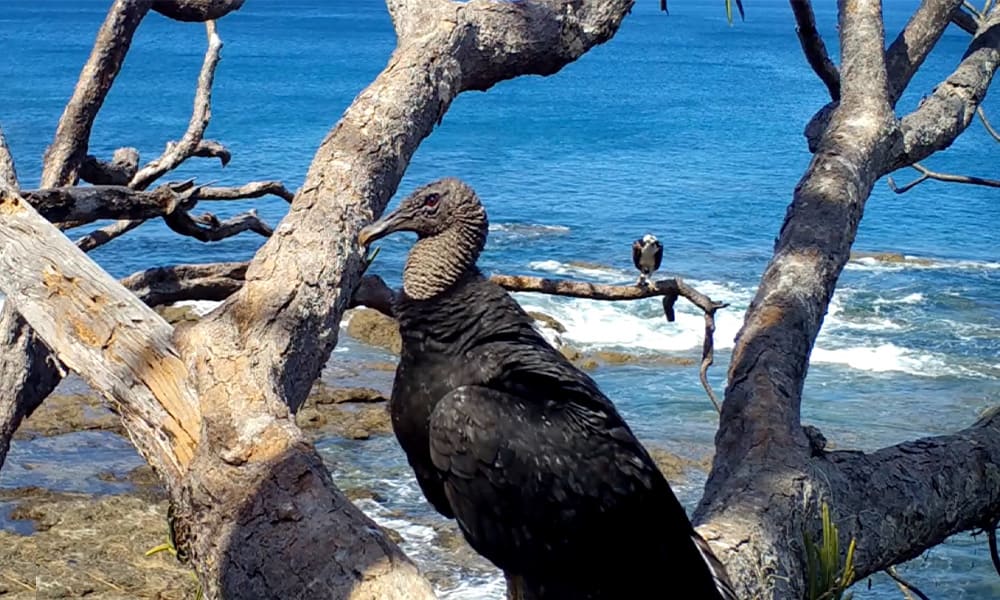Vultures look so graceful soaring in circles high above. Sometimes a lone black specimen can be spotted with wings stretched flat to catch updrafts, and sometimes a cloud of 20 or more of these huge birds may be silhouetted against the sky. They don’t stop; rather, with a few wing flaps, they continue their rounds until it’s time to drop for food.
They don’t look as nice sitting in a tree, a whole flock of them with shoulders hunched and black beady eyes looking you over as if checking your state of health. Even worse is the sight of a flock of vultures gathered at the roadside, pulling apart the hide and hair of some dead animal.
Not popular birds, vultures are scorned because of their association with death. Jokes and cartoons make fun of these big birds, depicting them just waiting for some poor human crossing a desert to succumb. Hawks and falcons convey romantic images sitting on their owners’ arms and following human commands. Eagles and condors are the national birds of several countries. In contrast, vultures are associated with eating carrion and not much else.
But they are not the foul fowl we think they are. They play an important role here in Costa Rica and around the world in cleaning up our highways, pastures and other areas of roadkill and sick and dead animals. The sights and smells that repel most others attract these winged scavengers.
In sanitary landfills, they do their share to reduce the mountains of garbage we produce daily, a function relished by few. And they are more efficient and sightly at this task than, say, maggots.
Called zopilotes in Spanish, vultures are found all over the country, with less concentration in wooded areas at high altitudes. Costa Rica has three species: the king vulture, the red-headed vulture and the black vulture.
Vultures live about 25 to 30 years in the wild, and up to 50 in captivity. Though their principal food is carrion, they also eat small live animals, and their profusion around garbage sites indicates they don’t turn their beaks up at past-its-prime vegetation.
Their keen sight and sense of smell enable them to locate food from their high flying formations. Though they are mostly loners, they gather when they see others flying in a food pattern. They sometimes live in pairs or in trios, and they are not territorial. The king vulture tends to be more solitary and more dominant over food.
Vultures do not make nests as other raptors do. They lay one or two eggs on the ground in a protected area, depression or cave, reproducing mostly in the dry season. With a wingspan of two meters, about six feet, these birds are impressive when they fly.
Seeing them soaring or sitting is common in rural areas where their type of food may be more abundant, and because nobody shoos them off. They also concentrate around mataderos, or slaughterhouses, doing the job of cleaning up the leftovers.
Vultures, or buzzards, may not attract admirers even among birdwatchers, but for their environmental role, they merit our respect.






